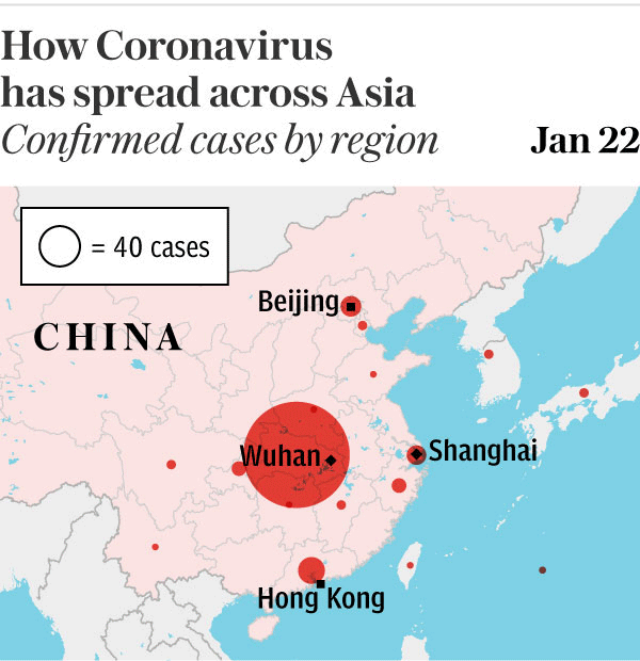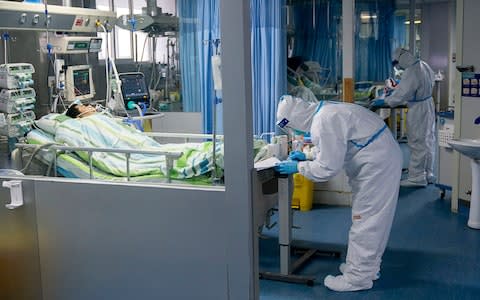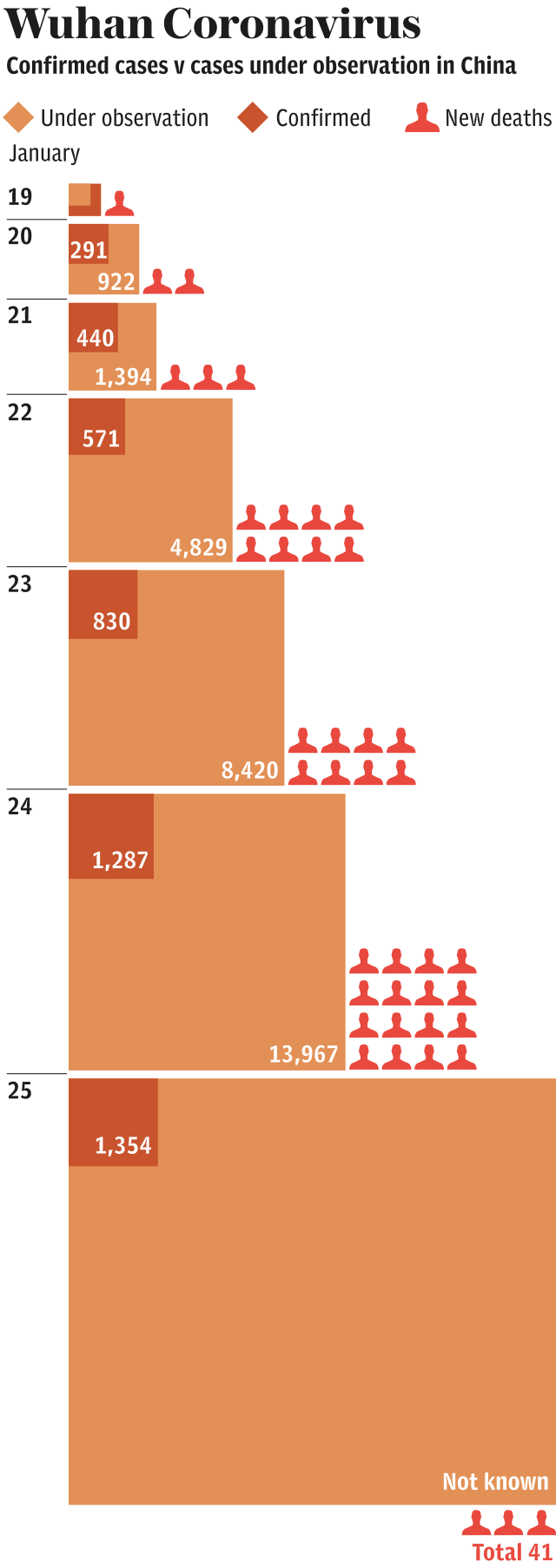US evacuates consular staff from Wuhan as coronavirus outbreak 'accelerates'

The US government is ordering the evacuation of consular personnel and their family members in Wuhan, the city at the epicentre of the rapidly escalating coronavirus outbreak.
The decision was made because of the circulating virus and “logistical disruption stemming from restricted transportation and overwhelmed hospitals in the city,” according to a US embassy spokesman in Beijing.
Although Wuhan has been on lockdown since Thursday, a 230-seat charter flight carrying American consular staff is expected to depart on Sunday.
US medical personnel will be on board to ensure anyone who may be infected does not spread it to anyone else. The embassy did not disclose where the plane will touch down.
The consulate will evacuate its personnel and some private citizens aboard a charter flight Tuesday. A notice on Sunday from the embassy in Beijing said there would be limited capacity to transport US citizens on the flight that will proceed directly to San Francisco.
The US government last upgraded its travel alert for Hubei on Friday, advising Americans not to travel to the area. The UK has made no move to evacuate staff but has advised against “all but essential” visits to Wuhan since Thursday.
The evacuation comes as Chinese Communist Party leader Xi Jinping on Saturday said that the coronavirus spread appeared to be accelerating, calling it a “grave situation”, and authorities raced to scale up emergency measures.
Most of China’s provinces and cities have activated its highest public alert, which would allow for quarantines, reported state media.
The newly-identified coronavirus has now infected more than 1,975 and killed at least 56 in China. Wuhan and its surrounding area are home to about 800 cases alone, though disease modelling experts estimate thousands more could be affected.
Infections have spread as far away as the US and Canada, while Malaysia discovered its first three cases this weekend, Australia its first four and Nepal its first. Japan added a second person to its list of confirmed infections.

First health worker dies from virus
A doctor treating coronavirus patients in Wuhan died Saturday morning in China after being infected himself. Liang Wudong, 62, had come out of retirement to assist emergency response efforts and is the first medical worker to have passed away from the novel virus.
Healthcare workers are particularly at risk because they’re often dealing with the most severely affected, said Jonathan Ball, professor of molecular virology at the University of Nottingham.
While Mr Liang’s death was “sad and unfortunate,” it was not unexpected, he said. “It’s a reminder that the people who are on the frontline put themselves at risk…. Unfortunately, you can’t reduce that risk to zero.”
Local health officials have also identified the youngest patient to date - a two-year-old girl surnamed Zhong - who had travelled from Wuhan to another Chinese city, where she developed a fever and began sneezing. She has since been admitted to a hospital and put in isolation.
Travel bans have stretched to several other Chinese cities, affecting roughly 56 million residents in an unprecedented effort to try to contain the disease.
“There's nothing in history that you can compare [the quarantine] to,” said Dr Michael Osterholm, director of the Center for Infectious Disease Research and Policy. “The magnitude of this is like trying to compare an aircraft carrier to a dingy boat.”

Local governments have cancelled several large-scale public Chinese New Year events and shut popular tourist sites across China. In Hebei province, non-essential vehicles will be banned from Sunday in Wuhan, the capital, and Starbucks has joined McDonalds in shutting all its stores and suspended delivery for the next week.
Haikou, a southern Chinese city on the tropical island of Hainan, has started confining tourists from Hubei to a hotel for a 14-day medical observation period.
Public areas, including elevators and train stations, are being disinfected regularly in cities across the country of 1.4 billion. And those venturing outdoors are donning face masks in hopes of protecting themselves from germs.
More than 400 military medical personnel have been dispatched to Wuhan to assist in emergency response efforts amid concerns of a shortage of staff and resources.
Chinese authorities also plan to build a 1,300-bed hospital over the next two weeks dedicated to treating coronavirus patients in Wuhan, where workers have already broken ground on 1,000-bed hospital, due to be completed by February 3.
Emergency declared in Hong Kong
Hong Kong declared a state of emergency on Saturday, and announced plans to limit rail and air links to mainland China in efforts to limit the city from exposure to the virus.
Schools there will remain closed until Feb 17, and universities have been asked to extend leave for students beyond the Chinese New Year holiday. Five cases have been confirmed in Hong Kong, with another 120 people suspected of having the disease receiving medical care.
But experts believe that controlling the outbreak may be even more challenging than initially thought.
Researchers have published a study in the Lancet, a peer-reviewed medical journal, suggesting that individuals may be able to spread the virus without knowing they have been infected.

The study tracked a family of seven in southern China, five of whom traveled to Wuhan. While there, two came in contact with an infected relative at a hospital. Days later, six in the family, including one person who hadn’t visited Wuhan, had the coronavirus, including a child who displayed no symptoms.
“Asymptomatic infection appears possible,” said Professor Kwok-Yung Yuen from the University of Hong Kong-Shenzhen Hospital, who led the research. That means it will be much harder for doctors and nurses to detect potentially affected individuals.
“With severe acute respiratory syndrome (Sars), people were presenting with a high fever when they were shredding the virus, so it was quite easy to detect and isolate people when they were most at risk to others,” said Jonathan Ball, professor of molecular virology at the University of Nottingham.
“If we haven't got those markers to identify people infected with the novel coronavirus, it makes it much more challenging to control,” he added.


